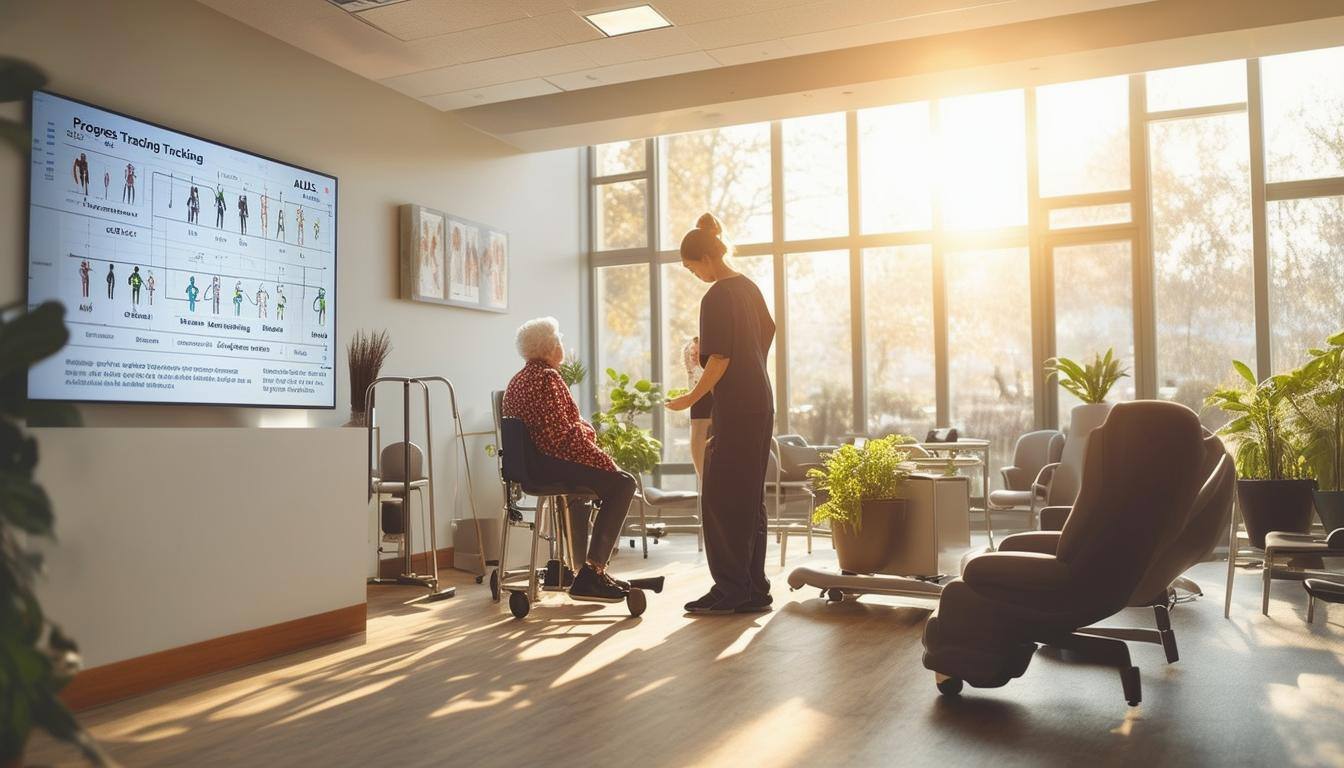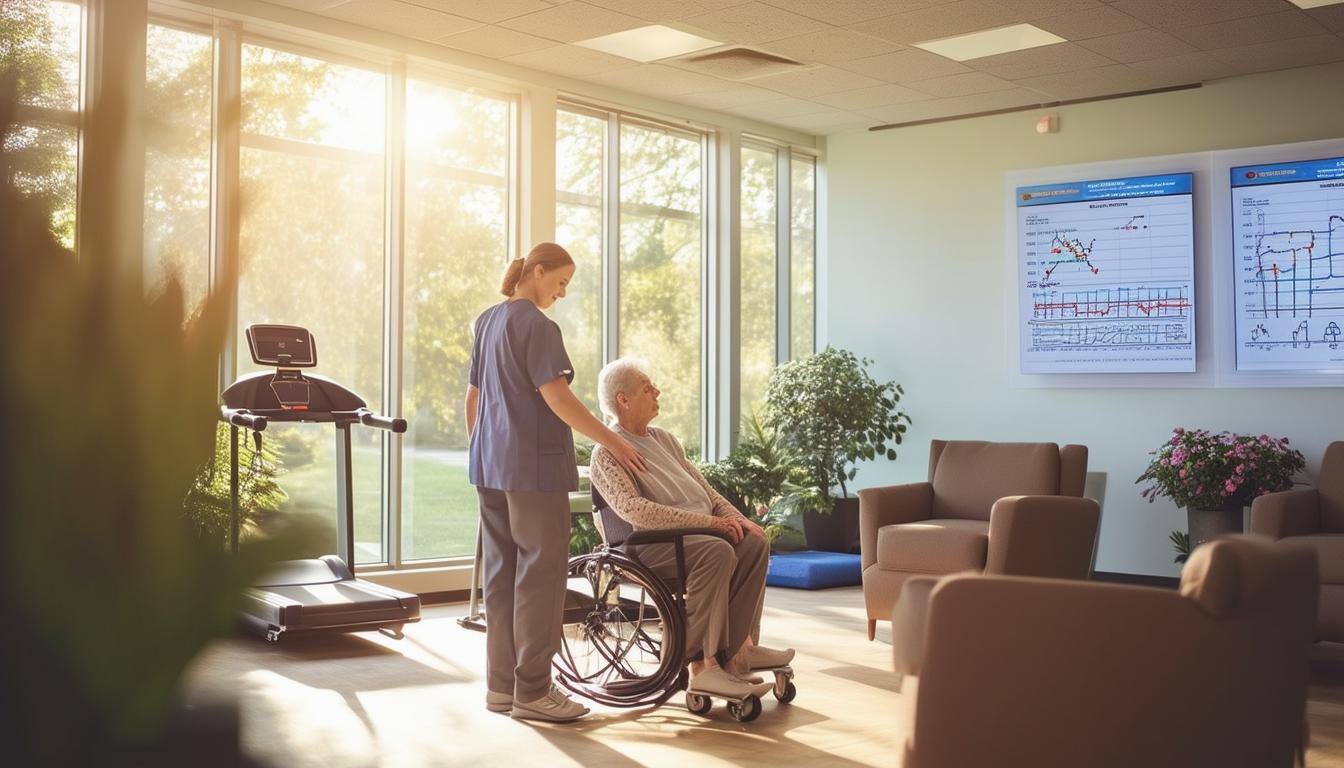January 13, 2025
Activities of Daily Living: A Guide for PT Professionals
Physical therapists often hear about the term ADL in clinical settings—but what does it really mean, and why is it so central to patient care? Activities of daily living encompass the core tasks that individuals perform on a regular basis to maintain health, autonomy, and overall well-being. For practice owners and PT professionals, understanding what are activities of daily living and how to address them in treatment can significantly impact patient outcomes and clinic success.
By the end, you’ll gain deeper insight into how you can integrate ADL-focused strategies and technologies—like solutions offered by PtEverywhere—to streamline your workflows, drive better results, and improve patients’ independence.
What Are Activities of Daily Living?
Activities of daily living refer to tasks that most of us take for granted but are fundamental to our ability to live independently. Think about each step you take in the morning—waking up, getting out of bed, bathing, dressing, and preparing breakfast. Each is considered an ADL or closely tied to it.
In many clinical frameworks, ADLs are divided into two main categories:
- Basic Activities of Daily Living (BADLs):
- Examples: Bathing, dressing, toileting, transferring (e.g., from bed to chair), eating, and ambulation (walking).
- These tasks are essential for personal care and self-maintenance.
- Instrumental Activities of Daily Living (IADLs):
- Examples: Managing finances, preparing meals, grocery shopping, housecleaning, and managing medications.
- While not always necessary for immediate survival, IADLs allow individuals to maintain independence and self-sufficiency in their communities.
To sum it up, when we talk about “what are activities of daily living”, we’re referencing the full set of tasks—both basic and instrumental—that individuals need to function day-to-day. Understanding a patient’s ability to perform these tasks can guide physical therapists in designing targeted interventions.

Why Are ADLs Important in Physical Therapy?
A. Foundation of Independence
For PT professionals, restoring and maintaining independence is a hallmark goal. Often, the difference between a patient returning to their own home or needing more supervised care hinges on ADL proficiency. If someone can’t get dressed or move from the bed to a chair safely, they may face health risks like falls or pressure injuries.
B. Personalized Treatment Planning
Physical therapists frequently tailor exercises and manual therapy techniques not just to improve range of motion or reduce pain, but to specifically support the tasks a patient struggles with. For instance, if a patient can’t bend enough to reach their feet for dressing, you might design exercises targeting hip flexion and core stability. If ambulation is the challenge, gait training becomes a priority.
C. Tracking Progress and Motivating Patients
Patients often feel more motivated when they see real-life improvements—like being able to climb stairs again or cook a favorite meal without assistance. Shifting focus from abstract strength gains to functional ADL achievements makes therapy sessions more meaningful. Seeing direct improvements in daily life can also improve patient compliance, satisfaction, and overall outcomes.
D. Risk Management and Fall Prevention
An inability to perform ADLs safely can increase the risk of complications—like slips in the shower or a chair transfer gone wrong. By identifying and addressing these deficits, PT professionals can recommend adaptive equipment, home modifications, or targeted strength and balance exercises to reduce accidents.
Activities of Daily Living Examples: A Detailed List
While every clinic might categorize ADLs slightly differently, the following activities of daily living list covers common tasks that therapists often assess and address.
Basic ADLs
- Bathing and Showering: Getting into and out of the tub or shower, washing the entire body, drying off safely.
- Personal Hygiene and Grooming: Brushing teeth, combing hair, trimming nails, shaving, etc.
- Dressing: Choosing appropriate clothes and putting them on (including managing zippers, buttons, or ties).
- Eating and Feeding: Bringing food from plate to mouth, chewing and swallowing.
- Toileting and Continence: Getting to the toilet, cleaning oneself, and controlling bladder or bowel function.
- Transferring and Mobility: Moving from one position to another, such as bed to chair, or chair to standing; also includes walking or wheeling around home environments.
Instrumental ADLs (IADLs)
- Meal Preparation: Planning, cooking, and cleaning up after meals.
- Shopping: Buying groceries, clothing, or other items needed for daily life.
- Housekeeping and Home Maintenance: Managing laundry, vacuuming, washing dishes, handling minor repairs.
- Medication Management: Taking medications at the correct times and dosages, ensuring timely refills.
- Transportation: Driving, using public transit, or arranging rides to run errands or attend appointments.
- Financial Management: Paying bills, balancing a checkbook or digital ledger, budgeting for daily expenses.
- Communication Devices: Using a phone, email, or internet to stay connected.
These activities of daily living examples provide a comprehensive overview of tasks to watch for when a patient’s functional status changes. Some patients may manage certain tasks independently but require help with others, especially as they transition through post-injury or post-operative phases.
Assessing ADLs in Physical Therapy
A. Observation and Interview
A common first step is simply talking to the patient (and possibly family members) about how they manage day-to-day tasks. How do they get dressed? Is there pain or dizziness when they stand in the shower? Do they rely on assistive devices (walker, cane, grab bars)?
B. Standardized Tools
Various clinical assessments can quantify how well patients perform ADLs:
- Katz Index of Independence in ADLs: Focuses on six basic ADLs (bathing, dressing, toileting, transferring, continence, feeding).
- Barthel Index: Assesses ten ADLs, often used for post-stroke or neurological rehab.
- Lawton-Brody IADL Scale: Evaluates instrumental tasks like finance management, meal prep, and housekeeping.
Physical therapists can use these tools to set baselines and track progress. For example, a patient might score lower in transferring initially, then show notable gains after a few weeks of targeted balance and strength training.
C. Functional Mobility Testing
For patients who have trouble walking or transferring, PTs often conduct functional mobility tests (e.g., Timed Up and Go, 6-Minute Walk Test). These results can correlate strongly with ADL independence since mobility underpins many tasks—like getting to the bathroom on time or going grocery shopping.
D. Continual Reassessment
Because patient status can change (improve, regress, or plateau), repeated ADL assessments at intervals help refine therapy goals. For instance, if a patient can now independently stand to brush their teeth but still cannot climb stairs, therapy might shift focus toward advanced mobility drills or strengthening exercises for lower extremities.

Making ADLs Easier and More Streamlined
As a physical therapy professional, you can empower patients with strategies and tools to simplify ADLs:
- Adaptive Equipment
- Reachers/grabbers for dressing.
- Long-handled sponges or shoe horns.
- Specialized utensils for easier feeding.
- Shower chairs or handrails in bathrooms.
- Environmental Modifications
- Removing tripping hazards like loose rugs.
- Improving lighting in hallways and bathrooms.
- Ensuring frequently used items are stored at reachable heights.
- Energy Conservation Techniques
- Teaching patients to sit while grooming or to break tasks into small, manageable steps.
- Encouraging rest breaks to avoid fatigue that might compromise safety.
- Progressive Exercise Programs
- Strength training for core and lower-body muscles for transfers and walking.
- Balance exercises to reduce fall risk during daily tasks.
- Range-of-motion drills for better reach (e.g., overhead cabinets, dressing).
- Routine and Organization
- Having a consistent schedule for activities like meal prep and bathing can reduce anxiety and confusion.
- Labeling drawers, using to-do lists or digital reminders for medication.
Harnessing PtEverywhere to Support ADL Management
In a busy PT clinic, monitoring each patient’s ADL improvements can be time-consuming without the right software solutions. That’s where PtEverywhere comes into play, offering a streamlined approach to documentation, scheduling, and patient engagement—all of which contribute to better functional outcomes:
- Outcome Tracking: PtEverywhere can store ADL assessment scores, so you can see progress at a glance and quickly share it with patients for motivation.
- Exercise Prescription: Creating and updating home exercise programs is simplified within a single platform, ensuring your patients stay consistent with their therapy.
- Telehealth Sessions: For patients who need a check-in but can’t always travel, PtEverywhere can facilitate telehealth visits to assess ADL challenges in real time—sometimes directly in their home environment.
- Patient Education: Use the software to share brief tutorials or guides on safe ways to perform certain ADLs (like transferring or using an assistive device).
By centralizing communication and data in one place, you spend less time juggling paperwork and more time doing what you do best: guiding patients toward independence and safety in their activities of daily living.
ADLs in Action: A Case Example
Imagine a 72-year-old patient with reduced hip mobility after a minor fall. They struggle to stand long enough to groom and can’t safely step into the bathtub unassisted. After an initial assessment, you determine they specifically need:
- Hip and core strengthening to support weight-bearing tasks.
- Balance training to reduce risk of further falls.
- Bathroom modifications, such as a tub transfer bench.
Using a platform like PtEverywhere, you log their baseline ADL assessment, assign relevant home exercises for hip mobility, and set periodic telehealth check-ins. Over six weeks, you measure their improved ability to step in and out of the tub using the Barthel Index and see a jump in independence scores. This real-life improvement in a key daily task keeps them out of assisted living and living comfortably at home.
Conclusion: Embracing ADL-Focused Care
For physical therapy professionals and practice owners, focusing on activities of daily living isn’t just about fulfilling clinical protocols. It’s about addressing the very tasks that give our patients the freedom and dignity of self-sufficiency. By recognizing the full scope of ADLs—from basic self-care to complex community activities—you can tailor interventions for maximum functional impact.
Activities of daily living are more than a checkbox in an evaluation—they’re a guiding principle for therapy. Understanding what are activities of daily living, leveraging an activities of daily living list to spot problem areas, and integrating these insights into individualized treatment plans can transform how you deliver care. And with software solutions like PtEverywhere, you can streamline every step of this process—from initial assessment to ongoing tracking and patient communication.
Whether you’re helping someone recover from surgery or supporting an older adult wishing to remain in their home, focusing on ADL performance keeps your work both patient-centered and outcome-driven. With the right tools, empathy, and evidence-based techniques, you’ll see tangible improvements in each patient’s daily life—and that’s the ultimate success metric in physical therapy.


